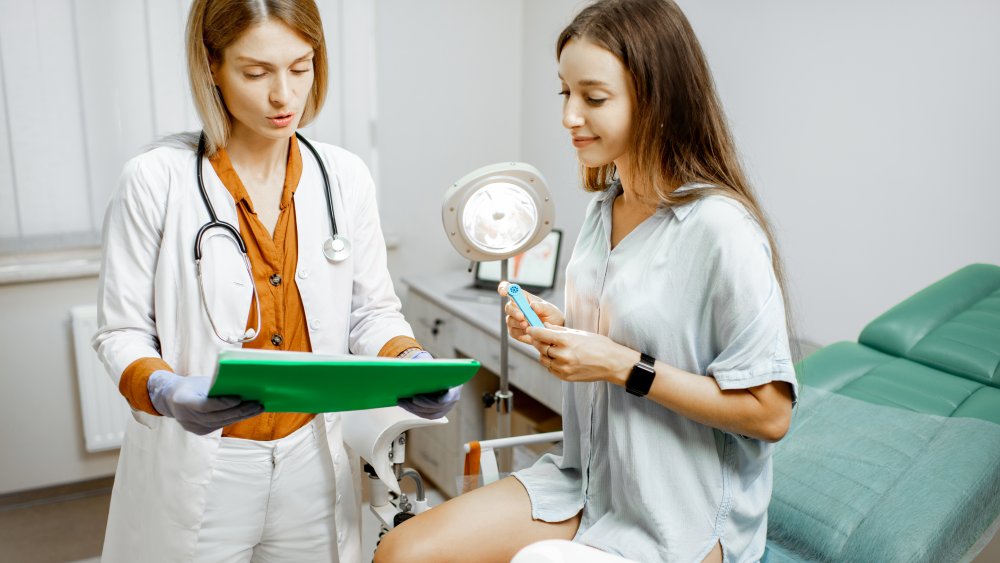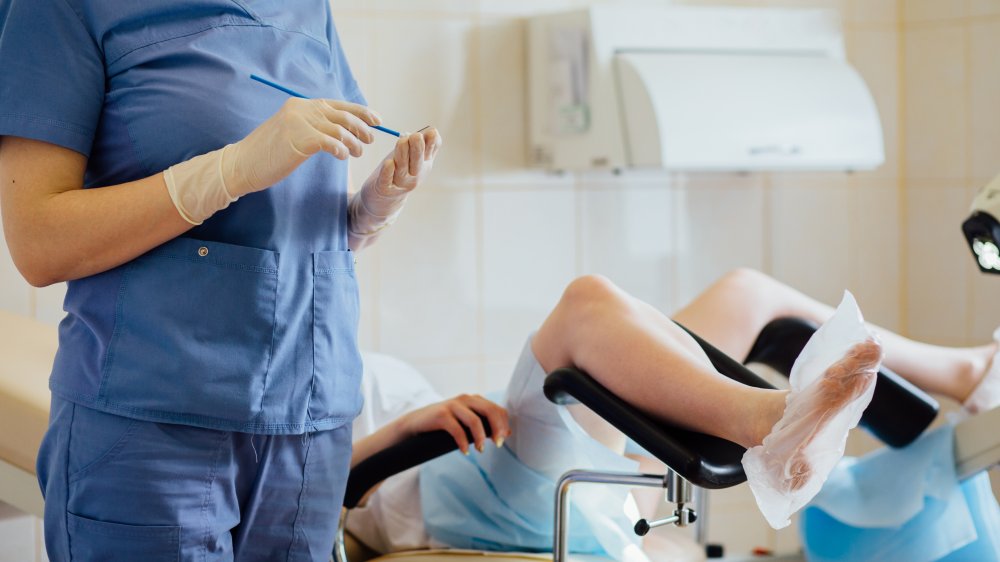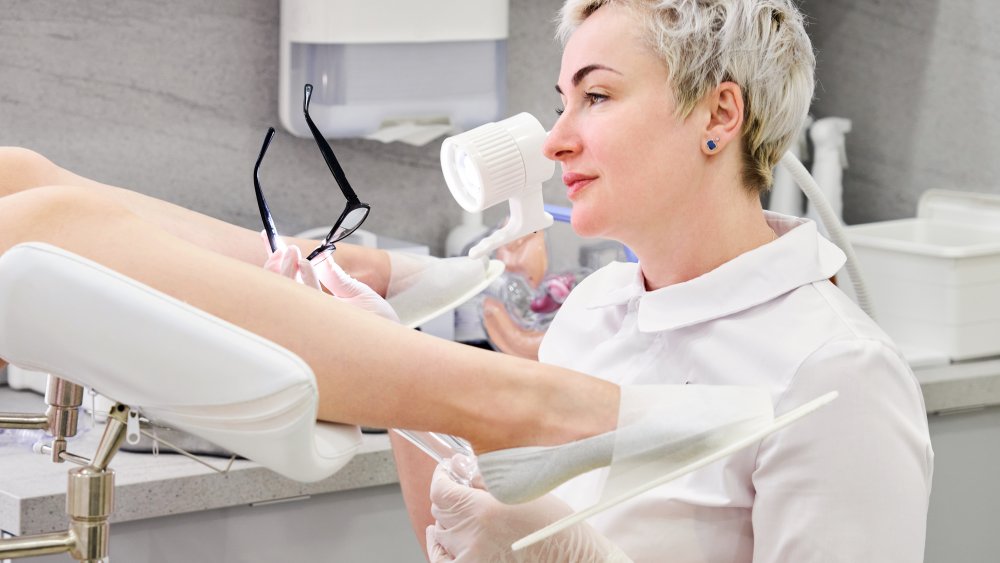Gynecologist Explains What To Expect During A Pap Smear
We may receive a commission on purchases made from links.
Ah, the joys of being a girl. It all starts with your period, and all of the mood swings, menstrual cramps, and breakouts that can accompany that. Eventually, your journey to womanhood will take you straight to the gynecologist's office — probably by around age 21, which is when the American College of Obstetricians and Gynecologists recommends your first check-up and your first Pap smear, a test to detect any abnormal changes within the cervix indicating the possibility of cancer. Your friends might have given you reason to feel anxious about this appointment — it does involve, after all, being naked from the waist down, and a lot of attention to your nether regions.
That's why it's really important to go into your first Pap smear knowing exactly what to expect, according to award-winning OB/GYN Felice Gersh, M.D., founder and director of the Integrative Medical Group of Irvine, in Irvine, California, and author of PCOS SOS Fertility Fast Track. "Undergoing a Pap smear is a very routine procedure, but for a woman new to this gyn undertaking, anticipation of having a Pap can be anxiety-provoking," she told Health Digest. To demystify the experience, Gersh explained exactly what will happen at this checkup.
What happens when you're in the gynecologist's exam room, OB/GYN explains
After the nurse or medical assistant takes you to the exam room, it will be time to get down to business. This is where things may get a little uncomfortable for first-timers. "You will be asked to undress from the waist down, given a sheet to cover your lap, and instructed to sit on the exam table. The doctor or health care provider will ask you to lie down on your back and place your feet into holders called stirrups," Gersh explains. If that's not awkward enough, you'll need to arrange your body so it's easy for the gynecologist to get a good look. "You will need to scoot your bottom down to the very edge of the exam table and spread your knees apart," she said. "The doctor will sit down on a stool at your feet, place gloves on, and let you know that the exam will commence."
The next part of the exam requires the use of some equipment that will allow your doctor to get a better look at your reproductive organs. "A device called a speculum is then inserted into your vagina. This is done slowly and with downward pressure to reduce discomfort," Gersh said. "Once all the way in, the speculum is opened. The speculum separates the anterior and posterior walls of the vagina to allow visualization of the cervix."
What your doctor is doing during the Pap exam
Once your doctor has the speculum inserted, it's time to perform the Pap smear. "A flat device that looks something like a small tongue depressor, called a spatula, is placed on the surface of the cervix, at the opening. The spatula is usually made of hard plastic and is shaped with a curvature to allow it to be placed on the cervix to gently rub the tissues around the cervical opening to remove some cells," Gersh explained. "Next, a small brush is placed into the cervical opening." This brush will be twirled to remove cells that will be sent to a lab for analysis. Both the spatula and brush are placed into the preservative solution in a small container and the cells are transferred to the fluid," she added.
While you're already in this position, your doctor will next examine you to check for any abnormalities. This is called a bimanual pelvic exam. "One or two fingers of one hand is placed into the vagina while the other is placed on the abdomen," Gersh explained, noting that lubricant will be used. "With gentle pressure, the female reproductive organs are palpated," she said. And that's it! "You can clean up and get dressed," Gersh said. The whole process may feel awkward, but it won't be painful.



